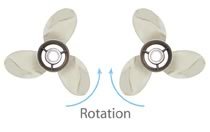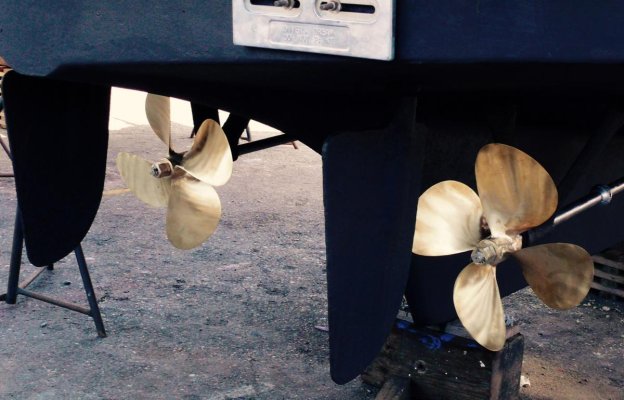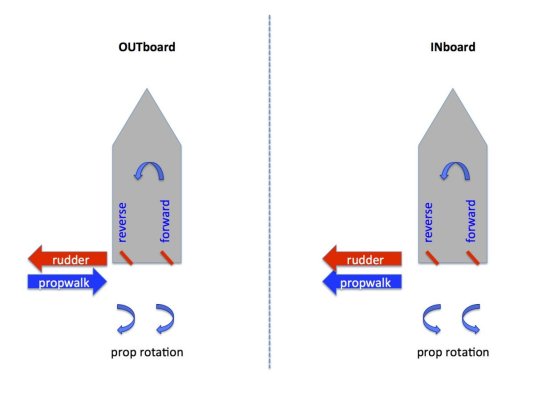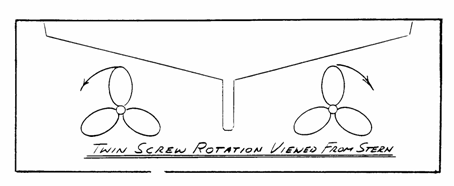Dramamine is recommended!
All these examples are only to twist or walk to port. I am not going to changing directions so as to try to make it clear how prop torque works, leaving it as a 'one sided example'. All of the prop torque comes from the bottom half of the blades. (as noted by an earlier poster who made the comment about the 'tires on the bottom'.)
Here is why boats with outboard turning wheels can't walk sideways. (without some outside force or help)
 via Imgflip GIF Maker
via Imgflip GIF Maker
In the above examples, the top video is both ahead, outboard turning.
 via Imgflip GIF Maker
via Imgflip GIF Maker
the second is backing the port, ahead on the stbd. the stern is being twisted to the starboard. The intent is to lift the bow to port, but you have to accept some stern slew the "wrong" way
All the prop torque is pushing the stern of the boat away from the dock.
The only way an outboard turning vessel can 'walk' sideways is using an outside force (bow/spring line, thruster, wind, current) to twist against to go sideways. But that is not walking, it is twisting, warping, springing, or breasting (depending upon which part of the world you learned your vocabulary from.)
The only thing that can be attempted (depending upon rudder size and horsepower) is to walk an outboard turning vessel by slewing it diagonally overpowering the backing engine with the ahead engine, but it is really influenced by wind and current more than an inboard turning vessel. And the progress is about at a 45 degree angle to the dock, making it impractical to dock in tight spaces as has been described earlier.
However, inboard turning wheels have two distinct attributes. Here is one of them.
Inboard turning wheels.
This is an example of inboard turning wheels, ahead propulsion.
 via Imgflip GIF Maker
via Imgflip GIF Maker
Now, here is the 'walk' laterally sideways.
 via Imgflip GIF Maker
via Imgflip GIF Maker
This is while walking to port, with approximately 10 to 20 degrees Stbd rudder. (the amount varies with wind, vessel characteristics, and rudder size.)
port backing, stbd ahead. Note direction of bottom of wheels, both are walking the stern to port. On a good walking vessel the stern will walk faster with the rudders used to balance the walk out to be even and in control.
This has little to do with space between wheels, depth of keel, or other physical attributes. It is all about the prop torque and how to harness it (or realize that you have NO prop torque to benefit from to walk sideways)
Sorry if the GIFs make you sick. They sort of all blend together after a while as I was making them!









